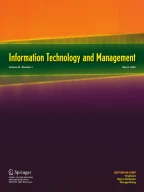Abstract
Many accounting and finance problems require ordinal multi-state classification decisions, (e.g., control risk, bond rating, financial distress, etc.), yet few decision support systems are available to aid decision makers in such tasks. In this study, we develop a Neural Network based decision support system (NN-DSS) to classify firms in four ordinal states of financial condition namely healthy, dividend reduction, debt default and bankrupt. The classification results of the NN-DSS model are compared with those of a Naïve model, a Multiple Discriminant Analysis (MDA) model, and an Ordinal Logistic Regression (OLGR) model. Four different evaluation criteria are used to compare the models, namely, simple classification accuracy, distance-weighted classification accuracy, expected cost of misclassification (ECM) and ranked probability score. Our study shows that NN-DSS models perform significantly better than the Naïve, MDA, and OLGR models on the ECM criteria, and provide better results than MDA and OLGR on other criteria, although not always significantly better. The effect of the proportion of firms of each state in the training set is also studied. A balanced training set leads to more uniform (less skewed) classification across all four states, whereas an unbalanced training set biases the classification results in favor of the state with the largest number of observations.
Similar content being viewed by others
Explore related subjects
Discover the latest articles, news and stories from top researchers in related subjects.References
E.I.Altman, Financial ratios, discriminant analysis and the prediction of corporate bankruptcy, Journal of Finance (September 1968) 589–607.
R. Barniv, Accounting procedures, market data, cash-flow figures, and insolvency classification: The case of the insurance industry, The Accounting Review 65(3) (1990) 578–604.
R. Barniv and A. Raveh, Identifying financial distress: A new non-parametric approach, Journal of Business Finance and Accounting 16(3) (1989) 361–383.
R. Barniv, A. Agarwal and R. Leech, Predicting the outcome following bankruptcy filing: A three state classification using neural networks, International Journal of Intelligent Systems in Accounting Finance and Management 6 (1997) 177–194.
E. Deakin, A discriminant analysis of predictors of business failure, Journal of Accounting Research (1972) 167–179.
T.E. Dielman and H.R. Oppenheimer, An examination of investor behavior during periods of large dividend changes, Journal of Financial and Quantitative Analysis (1984) 197–216.
R.O. Edmister, An empirical test of financial ratio analysis for small business failure prediction, Journal of Financial and Quantitative Analysis (1972) 1477–1493.
J.A. Elliott and D.B. Kennedy, Estimation and prediction of categorical models in accounting research, Journal of Accounting Literature 7 (1988) 202–242.
E.S. Epstein, A scoring system for probability forecasts of ranked categories, Journal of Applied Meteorology 8 (1969) 985–987.
J.A. Gentry, P. Newbold and W. Whitford, Classifying bankrupt firms with funds flow components, Journal of Accounting Research (1985) 146–160.
W.S. Hopwood, J. McKeown and J. Mutchler, The sensitivity of financial distress prediction models to departures from normality, Contemporary Accounting Research 5(1) (1988) 284–298.
C.S. Huang, R.E. Dorsey and M.A. Boose, Life insurer financial distress prediction: A neural network model, Journal of Insurance Regulation 13(2) (1995) 131–167.
D.B. Kennedy, Classification techniques in accounting research: Empirical evidence of comparative performance, Contemporary Accounting Research 8(2) (1992) 419–422.
A. Lau and Hing-Ling, A five-state financial distress prediction model, Journal of Accounting Research Spring (1987) 127–138.
A.H. Murphy, A note on the ranked probability score, Journal of Applied Meteorology 10 (1971) 155–156.
J.A. Olson, Financial ratios and the probabilistic prediction of bankruptcy, Journal of Accounting Research (1980) 109–131.
E. Patuwo, M.Y. Hu and M.S. Hung, Two-group classification using neural networks, Decision Sciences 24(4) (1993) 825–846.
D.E. Rumelhart and J.L. McClelland, Parallel Distributed Processing - Explorations in the Microstructure of Cognition, Vol. 1 (MIT Press, 1986).
K.Y. Tam and M.Y. Kiang, Managerial applications of neural networks: The case of bank failure predictions, Management Science 38(7) (1992) 926–947.
K.Y. Tam and M.Y. Kiang, Predicting bank failures: A neural network approach, Applied Artificial Intelligence 4 (1990) 265–282.
T.J. Ward, An empirical study of the incremental predictive ability of Beaver's Naïve operating flow measure using four-state ordinal models of financial distress, Journal of Business Finance and Accounting 21(4) (1994) 547–561.
T.J. Ward and B.P. Foster, An empirical analysis of Thomas's financial accounting allocation fallacy theory in a financial distress context, Accounting and Business Research 26(2) (1996) 137–152.
R.L. Wilson and R. Sharda, Bankruptcy prediction using neural networks, Decision Support Systems 11 (1994) 545–557.
M.E. Zmijewski, Methodological issues related to the estimation of financial distress prediction models, Journal of Accounting Research Supplement (1984) 59–82.
J.M. Zurada, B.P. Foster and T.J. Ward, A comparison of the ability of neural networks and logit regression models to predict levels of financial distress, in: Information Systems Development: Methods & Tools, Theory & Practice, eds. S. Wrycza and J. Zupancic (Plenum Press, 1997).
J.M. Zurada, B.P. Foster, T.J. Ward and R.M. Barker, A research note on the relative ability of neural networks and logit regression models to predict dichotomous and multi-state financial distress variables, Working Paper (1997).
Author information
Authors and Affiliations
Rights and permissions
About this article
Cite this article
Agarwal, A., Davis, J.T. & Ward, T. Supporting ordinal four-state classification decisions using neural networks. Information Technology and Management 2, 5–26 (2001). https://doi.org/10.1023/A:1009952903252
Issue Date:
DOI: https://doi.org/10.1023/A:1009952903252
